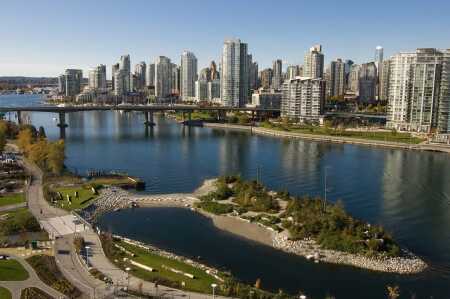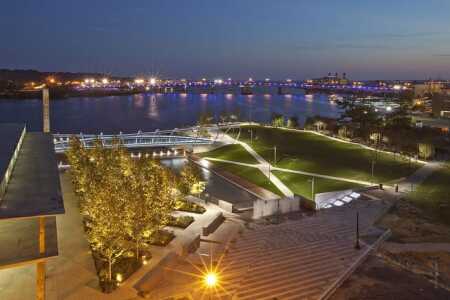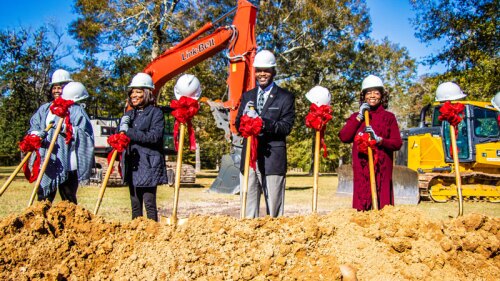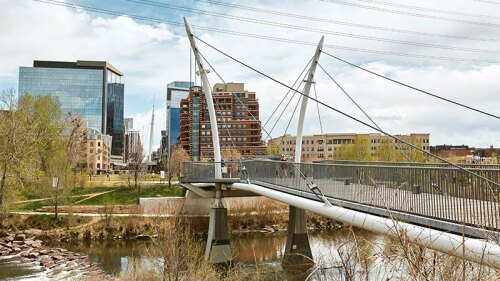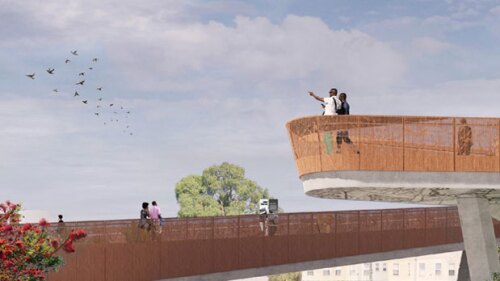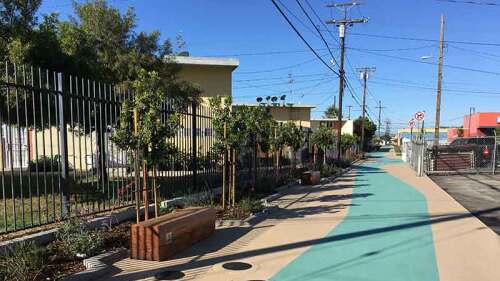Two parks have been selected as winning projects in the Urban Land Institute (ULI) Urban Open Space Award competition. The Parks and Waterfront at Southeast False Creek, located in Vancouver, British Columbia, and the Yards Park, located in Washington, D.C., were both recognized at ULI’s Fall Meeting in Chicago.
The award recognizes outstanding examples of transformative and vibrant public open space – large and small - that have spurred economic and social regeneration of their adjacent communities. Each of the winning projects receives a cash prize that can be used for maintenance and upkeep of the parks. The two winners were selected from a competitive group of finalists, which included Wilmington Waterfront Park in Wilmington, California; Cumberland Park in Nashville, Tennessee; and Brooklyn Bridge Park in New York, New York.
The Parks and Waterfront at Southeast False Creek, owned by the city of Vancouver and designed by PWL Partnership Landscape Architects Inc., was erected on a previously industrialized waterfront area. The urban open space project exemplifies a new green infrastructure based approach to public realm through the introduction of restored natural environments into a highly urban community.
The Yards Park, owned by the District of Columbia and designed by M. Paul Friedberg & Partners, is a regeneration project that brings local communities and visitors to the Anacostia River. The park’s developer, Forest City, intended for the site to provide a transformative and vibrant public space that aimed to generate social, economic, and ecological value under an innovative public-private funding model.
According Jury chair M. Leanne Lachman, president of Lachman Associates, New York, New York, these winners offer a very enriching insight into different strategies to recuperate and enhance a public realm that benefits and strengthens neighborhood development. “Southeast False Creek and the Yards embody our common urban fabric. These spaces offer inspiring lessons to generate economic well-being and sustainable models of thriving communities worldwide.”
The five finalists were selected from an impressive collection of entries, representing urban areas throughout North America. Since the program is not meant to be a landscape architecture or urban design competition, the jury selected finalists based on overall project design and how each impacted or revived their surrounding areas.
The other three finalists, with the project team in parentheses, were:
- Brooklyn Bridge Park, New York, New York (Project Owner: Brooklyn Bridge Park; Designer: Michael Van Valkenburgh Associates, Inc.) - 1.3 miles of Brooklyn’s waterfront are being revitalized with an array of open spaces that return the area to public use, reconnect with adjacent neighborhoods, and generate a sustainable and self-financed multi-use civic space.
- Cumberland Park, Nashville, Tennessee (Project Owner: Metro Nashville Parks and Recreation Department; Lead Design Consultant: Hargreaves Associates) - Part of a phased master plan to draw residents and visitors back to the river and downtown, the space is committed to both new generations and to sustainability through brownfield remediation, floodplain preservation, and interpretation of cultural and natural resources.
- Wilmington Waterfront Park, Wilmington, California (Project Owner: Port of Los Angeles; Designer: Sasaki Associates, Inc.) - The space creates a new public realm that mediates the relationship between the residential neighborhood of Wilmington and the intensely active Port of Los Angeles. Mitigating the industrial impact of the port, it provides a safe and accessible space that celebrates the vibrant community culture within a previously underserved neighborhood of Los Angeles.
The award was created through the generosity of Amanda M. Burden, New York City Planning Commissioner and 2009 laureate of the ULI J.C. Nichols Prize for Visionaries in Urban Development. In 2011, the Kresge Foundation, MetLife Foundation, and the ULI Foundation joined forces to continue the Urban Open Space Award through 2014.
To be eligible for the award, an open space project must: have been opened to the public for at least one year and no more than fifteen years; be predominantly outdoors and inviting to the public; provide abundant and varied seating, sun and shade, trees and plantings with attractions; be used intensively on a daily basis by a broad spectrum of users throughout the year; have a positive economic impact on its surroundings; promote physical, social, and economic health of the larger community; and provide lessons, strategies, and techniques that can be used or adapted in other communities.

